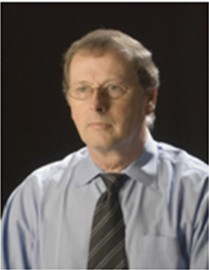Presented by Anthony K. Cheetham
Department of Materials Science and Metallurgy, University of Cambridge
27 Charles Babbage Road, Cambridge CB3 0FS, UNITED KINGDOM
akc30@cam.ac.uk
Location:A429
Time:3:30 p.m.,Sep 13,2013
 Tony Cheetham obtained his D.Phil. at Oxford in 1971 and did post-doctoral work in the Materials Physics Division at Harwell. He joined the chemistry faculty at Oxford in 1974, and then moved to the University of California at Santa Barbara in 1991 to become Professor in the Materials Department. He held the Directorship of UCSB’s Materials Research Laboratory (1992-2004) and was Director of the International Center for Materials Research (2004-7). In 2007 he moved to Cambridge to become the Goldsmiths’ Professor of Materials Science. Cheetham is a Fellow of the Royal Society (1994), the German National Academy of Sciences (Leopoldina), and several other academies. He has received numerous awards for his work in the field of materials chemistry; these include a Chaire Blaise Pascal, Paris, (1997-9), the Somiya Award of the IUMRS (2004), the Leverhulme Medal of the Royal Society (2008), the Platinum Medal of the IOM3 (2011), and honorary doctorates from Versailles (2006), St. Andrews (2011), and Tumkur (2011). Cheetham became Treasurer and Vice President of the Royal Society in 2012.
Tony Cheetham obtained his D.Phil. at Oxford in 1971 and did post-doctoral work in the Materials Physics Division at Harwell. He joined the chemistry faculty at Oxford in 1974, and then moved to the University of California at Santa Barbara in 1991 to become Professor in the Materials Department. He held the Directorship of UCSB’s Materials Research Laboratory (1992-2004) and was Director of the International Center for Materials Research (2004-7). In 2007 he moved to Cambridge to become the Goldsmiths’ Professor of Materials Science. Cheetham is a Fellow of the Royal Society (1994), the German National Academy of Sciences (Leopoldina), and several other academies. He has received numerous awards for his work in the field of materials chemistry; these include a Chaire Blaise Pascal, Paris, (1997-9), the Somiya Award of the IUMRS (2004), the Leverhulme Medal of the Royal Society (2008), the Platinum Medal of the IOM3 (2011), and honorary doctorates from Versailles (2006), St. Andrews (2011), and Tumkur (2011). Cheetham became Treasurer and Vice President of the Royal Society in 2012.
Presentation Abstract:
Much of our current research on hybrid frameworks focuses on their physical properties, including their mechanical, optical, magnetic, ferroelectric and electronic behaviour. I shall show that a variety of chemical and structural parameters influence the mechanical properties of MOFs, including their solvent accessible volume, the identity of the cations, substituents on the organic ligands, hydrogen bonding, and their framework connectivity. I shall also describe some of our extensive work on the amorphization of porous MOFs, including recent measurements on ZIFs by 13C and 15N NMR. In another strand of our work, I shall discuss some of the interesting behaviour of dense hybrid frameworks under hydrostatic pressure. Finally, there is much current interest in the nanostructuring of hybrid frameworks, including both dense systems and classical MOFs. I shall describe some recent research in this area, including the creation of hierarchical porosity in MOFs by the use of block co-polymers templates and the formation of nanostructured carbons during the pyrolysis of framework materials.
Recent Publications:
·Thermochemistry of zeolitic imidazolate frameworks (ZIFs) with varying porosity, J. T. Hughes, T. D. Bennett, A. K. Cheetham, & A. Navrotsky, J. Amer. Chem. Soc. 135, 598-601 (2013)
·Carbon with hierarchical pores from carbonized metal-organic frameworks for lithium sulphur batteries, K. Xi, S. Cao, X. Peng, C. Ducati, R. V. Kumar & A. K. Cheetham, Chem. Comm. 49, 2192-2194 (2013)
·Ligand-directed control over crystal structure and solid solution formation in inorganic-organic frameworks, H. H.-M. Yeung, W. Li, P. J. Saines, T. K. J. Köster, C. P. Grey & A. K. Cheetham, Angew. Chem. Intl. Ed. Eng. 52, 5544-5547 (2013)
·Amorphization of zeolitic imiadzolate frameworks (ZIFs) for the irreversible trapping of iodine, T. D. Bennett, P. J. Saines, D. A. Keen, J.-C. Tan and A. K. Cheetham, Chem. Euro. J, 19, 7049-7055 (2013)
·Photo-oxidation of polymeric membrane with intrinsic microporosity, Q. Song, S. Cao, L. Lu, P. Zavala-Rivera,Y. Ji, Z. Shuai, S. A. Al-Muhtaseb, A. K. Cheetham, & E. Sivaniah, Nature Communications 4, 1918 (2013)
·Hierarchical bicontinuous porosity in metal-organic frameworks templated from functional block co-oligomer micelles, S. Cao, G. Gody, W. Zhao, S. Perrier, X. Peng, C. Ducati, D. Y. Zhao & A. K. Cheetham, Chemical Science 4, 3573-3577 (2013)
·Phase separation in garnet solid solutions and its effect on optical properties, S. Kaveh, C. Tremblay, N. Norhashim, R. J. Curry & A. K. Cheetham, Advanced Materials DOI: 10.1002/adma.201302288 (2013)

